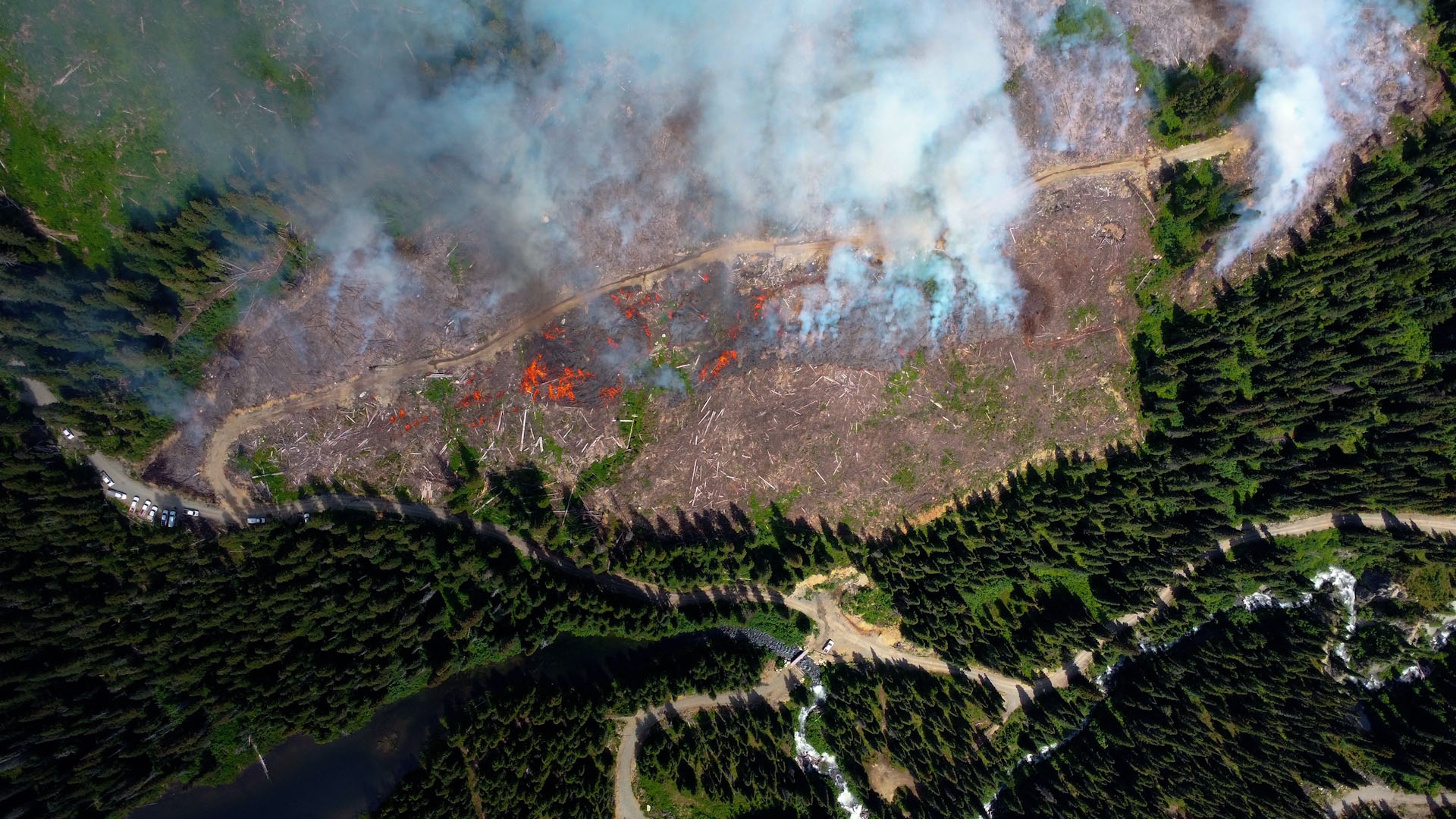Indigenous partnerships are the foundation of prescribed fire and cultural burning in British Columbia. Working together through knowledge sharing, training, and boots on the ground is crucial to ensuring the continued health and resilience of the province’s ecosystems, and mitigating the impacts of wildfire on our forests and communities. The importance of everyone doing their part is underscored by the unprecedented wildfire seasons we’ve faced in recent years.
Successful forest stewardship brings together government and public partners to plan, prioritize, and act together to create healthy, resilient ecosystems. A shared stewardship approach to wildfire risk reduction has been adopted at the provincial, regional, and local levels, and one of the many groups contributing to it is the First Nations’ Emergency Services Society of BC (FNESS). Dedicated to assisting First Nations in developing and sustaining safer and healthier communities, FNESS is a non-profit registered charity that helps First Nation communities prepare for and manage emergencies. The society has experienced rapid growth in recent years as it leads work across a range of specialties, including mitigation, emergency response, and wildfire services.
Enter Dave Pascal, a cultural burning and prescribed fire specialist with FNESS, who is focused on revitalizing the program with First Nations in British Columbia. Pascal joined FNESS in the summer of 2022 after spending more than two decades working for BC Wildfire Service. As an integral member of the planning and execution team, Pascal engages First Nation communities to determine funding mechanisms, identify burn sites with Elders or Firekeepers, and assign personnel and resources. Less than a year into the new role, he continues to feel energized by the job and its responsibilities.
“It is the best work I’ve ever done in my career,” said Pascal. “It’s meaningful for me, and it’s easy to get out of bed and go to work.”
As a proud member of the Mount Currie Band of Lil’wat Nation, Pascal finds particular importance in giving back to First Nation communities. “I’ve put out enough fires that it’s time to focus on a group of people like myself who have been marginalized, who have a skillset that was taken away from them. I’m trying to revitalize that, to build that sense of capacity and training from within, and help however I can.”
Prescribed fire and cultural burning have been used among Indigenous peoples in British Columbia since time immemorial, but fire suppression in recent years has prevented these practices from occurring. After many years of suppression, an ecosystem that needs periodic fire becomes unhealthy—overcrowding stresses trees, fire-dependent species disappear, and flammable fuels build up and grow hazardous. But, the right fire at the right place at the right time can help return balance to our forests.
As Pascal describes it, cultural burning and prescribed fire are two different types of burns; he views cultural burning as holistic, while prescribed fire is more about resource management. That said, both practices are focused on similar outcomes: the planned and controlled application of fire to achieve a variety of land management objectives, including wildfire risk reduction for the protection of communities and critical infrastructure.
For many people, the concept of fighting fire with fire seems counterintuitive. But according to Pascal, prescribed burning is simply firefighting backwards. “If you can put out fires, you probably have some training on how to start them,” said Pascal. “So the people who are doing the burning and firefighting are usually the same personnel.”
Although every scenario is different and requires a flexible approach to incorporate cultural practices, one aspect remains consistent. Each and every time FNESS engages a First Nation they listen to the community with an open mind to learn their goals and determine how FNESS can assist. By taking a collaborative approach and providing planning support and mentorship for the work identified directly by First Nations, FNESS can allocate funding to projects that will truly make a difference within each community.
Pascal is the first to admit that while he has years of expertise related to cultural burns and prescribed fire, it’s the local knowledge and experience from each First Nation that helps make the work a success. From the local landscape to weather patterns, Pascal says Indigenous input is crucial throughout the burn process.
In the future, Pascal hopes that more education and mentorship opportunities become available to assist in addressing the issues frequently identified by First Nations, such as training, capacity, and being self-sufficient. “Partnerships are vital, and the only way that we’re going to get this meaningful work done is together and by collaborating,” Pascal said. “I don’t think there are a lot of sacrifices that have to be made, and I think the work benefits everybody.”
To listen to the Get FireSmart podcast interview featuring Dave Pascal, click here
